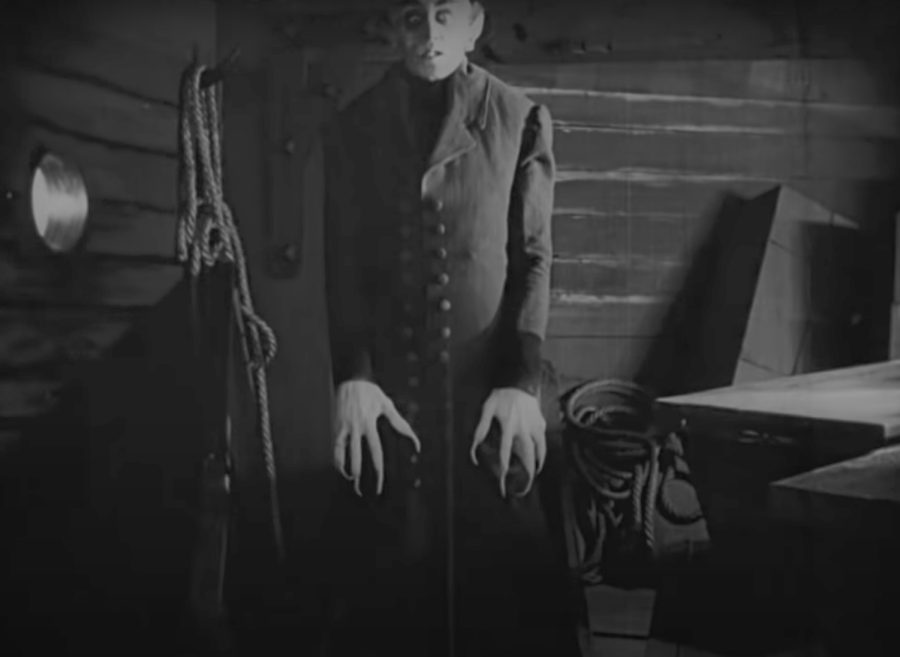Don’t Miss Out on the Chance to See ‘Nosferatu’ on the Big Screen
September 9, 2022
On Saturday, Sept. 10 at 7:30 p.m., to celebrate the 100th anniversary of F.W. Murnau’s “Nosferatu,” the Salt Lake Film Society will be presenting a special screening of the horror classic with the band The Invisible Czars providing a live soundtrack. What better way to summon autumn and pre-game for Halloween?
Early ‘Dracula’
The earliest surviving film version of “Dracula,” “Nosferatu” was made without the permission of Bram Stoker’s estate. In order to get around the copyright laws, Murnau and his screenwriters changed the names of the characters, stripped the plot for points and filed off the serial numbers.
The changes did not satisfy Stoker’s widow, Florence Stoker. She learned of the film a month after its March 1922 premiere in Berlin, when a program was mysteriously mailed to her. A widow dependent on the royalties from “Dracula,” Stoker entered into a legal battle with Prana-Film and the company that took over after the movie studio went bankrupt.
After years in court, Stoker demanded that all copies of the movie be destroyed. The German court ruled in her favor. There is no complete version of the original print. Today’s version of “Nosferatu” has been cobbled together from a handful of prints that survived and found their way to archives and museums.
Florence Stoker’s war against the movie is ironic considering that nearly all subsequent filmed versions of “Dracula” follow the plotting and structure of “Nosferatu” more closely than they do Bram Stoker’s novel. In fact, I don’t feel it’s hyperbolic to say that all movie monsters have appeared on the screen underneath the shadow of “Nosferatu” and Max Schreck‘s portrayal of the titular character.
The film follows naive, unsuspecting lawyer Thomas Hutter. Hutter travels from his home in the fictional town of Wisborg, Germany to Transylvania in order to sign a property deal with the mysterious Count Orlock. Something is off about Orlock from the beginning. Upon meeting, Orlock seems a little too interested in Thomas’ blood after he cuts himself with a knife at dinner. However, the film takes a truly sinister turn when Orlock spies a photo of Thomas’ wife Ellen. After admiring the beauty of Ellen’s neck, Orlock is off to Wisborg in pursuit, bringing with him destruction and the plague.
Unlike Any Other Movie You Could Ever See
If silent films are even thought of in the year of our Lord 2022, the image is that of a boring movie with over-the-top, goofy acting and cheap filmmaking techniques. “Nosferatu” is a perfect entry point to silent films because it’s so different from anything else. There’s no other movie like “Nosferatu,” not in the silent era, not in the 40s, or the 60s or the 80s, and certainly not now. It feels beamed in from another planet.
In his essay on the movie for his “Great Movie Collection,” Roger Ebert wrote, “It is commonplace to say that silent films are more ‘dreamlike,’ but what does that mean? In ‘Nosferatu,’ it means that the characters are confronted with alarming images and denied the freedom to talk them away. There is no repartee in nightmares. Human speech dissipates the shadows and makes a room seem normal. Those things that live only at night do not need to talk, for their victims are asleep, waiting.”
While watching “Nosferatu” there is nothing familiar or recognizably human to latch onto or provide comfort. The movie isn’t traditionally scary but carries with it an unsettling, eerie feeling. A laying-in-bed-at-three-o’clock-in-the-morning and staring at a shadow on the wall sort of feeling. Even a hundred years later “Nosferatu” holds immense power.
At the very least, however, after watching “Nosferatu” you will be able to get the “Spongebob Squarepants” and “What We Do in the Shadows” jokes. So, ultimately it’ll be worth it.








